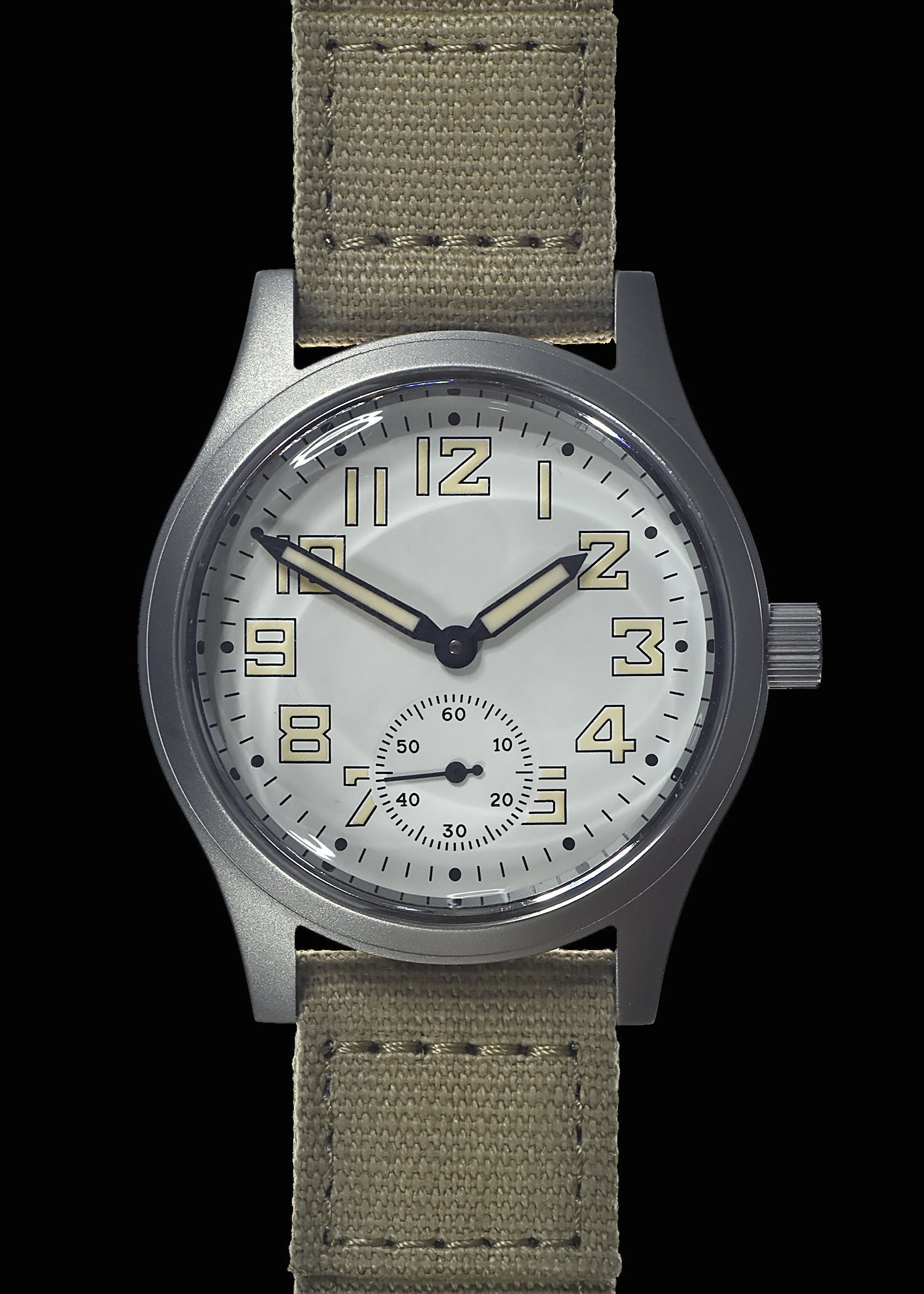
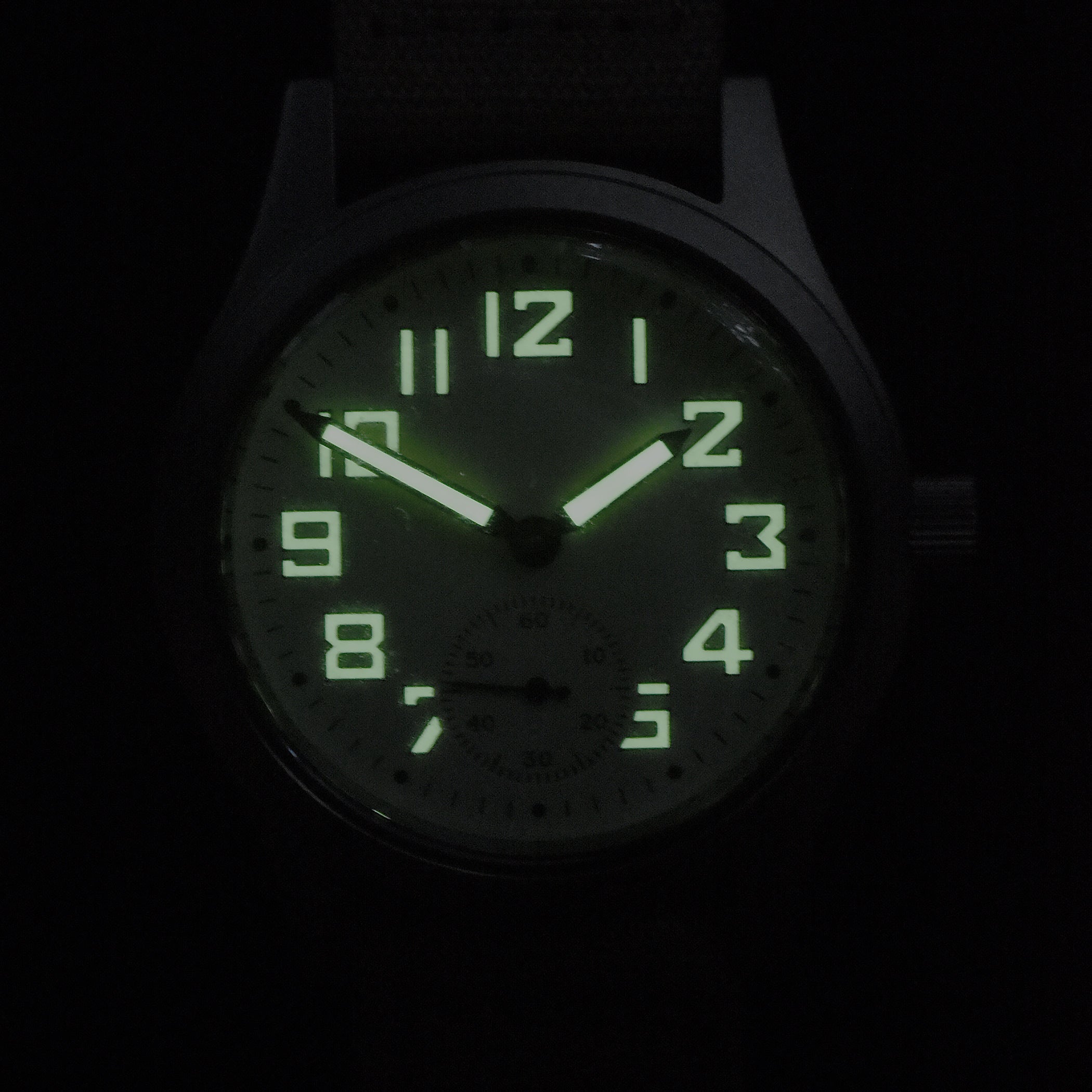
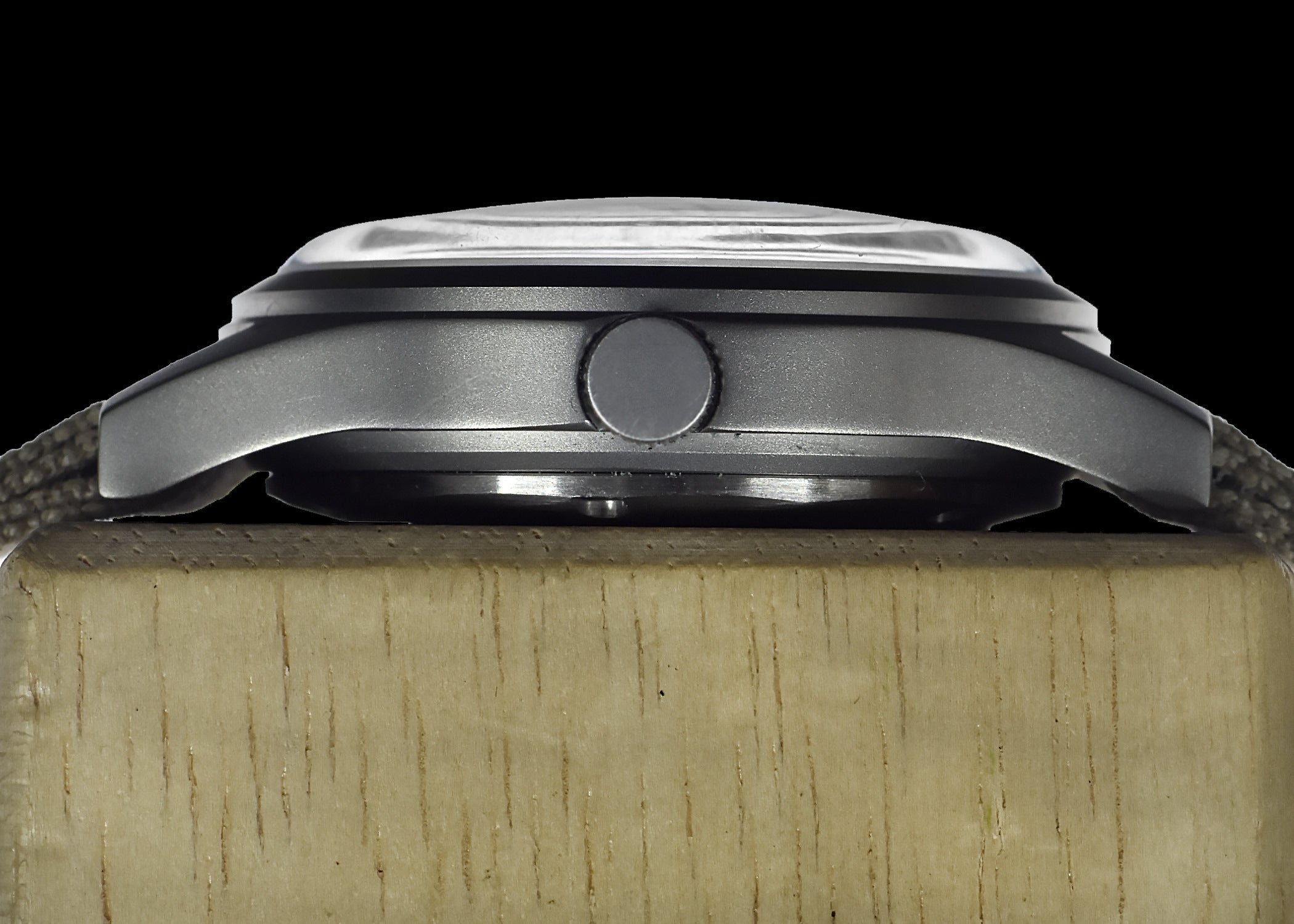
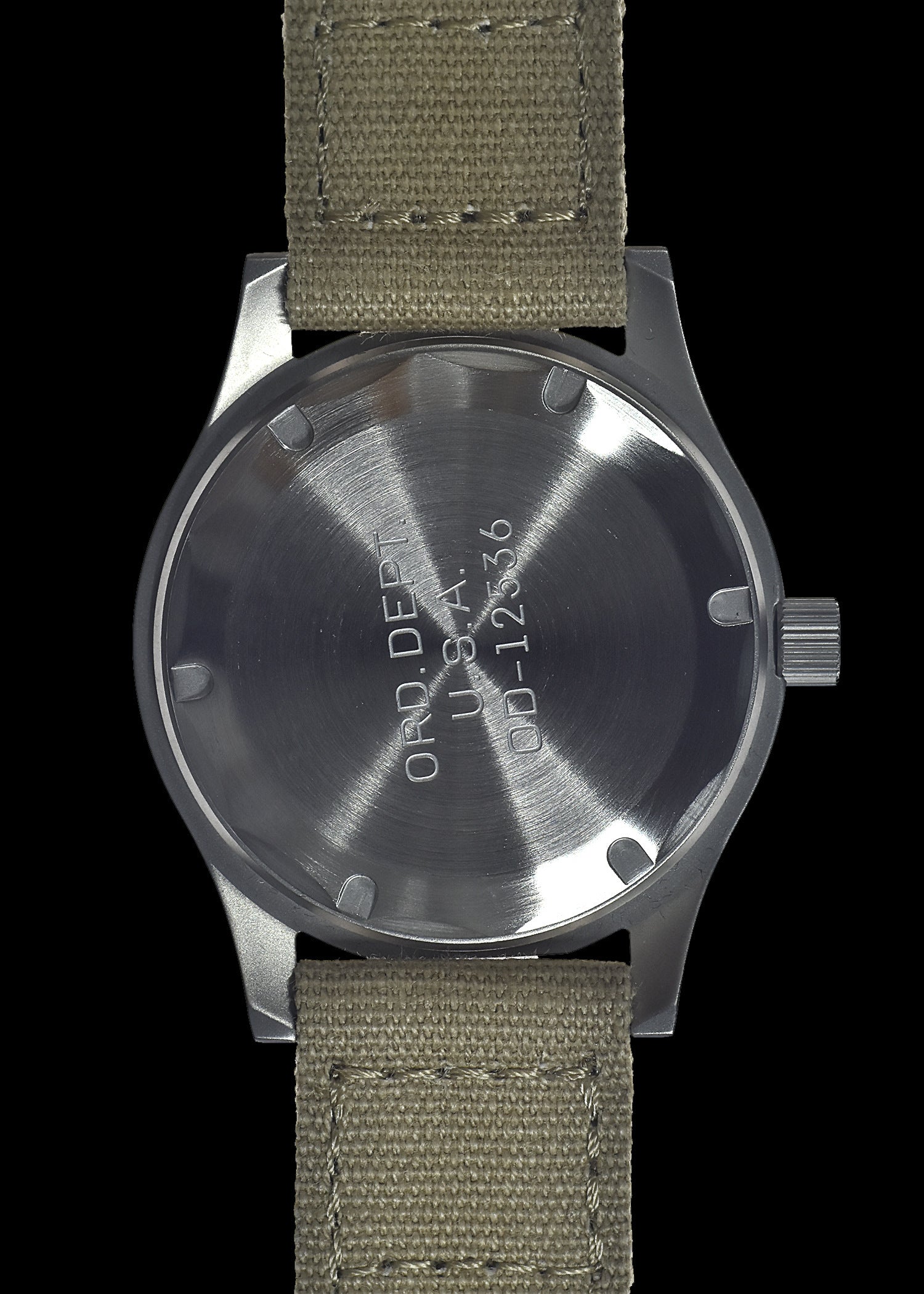
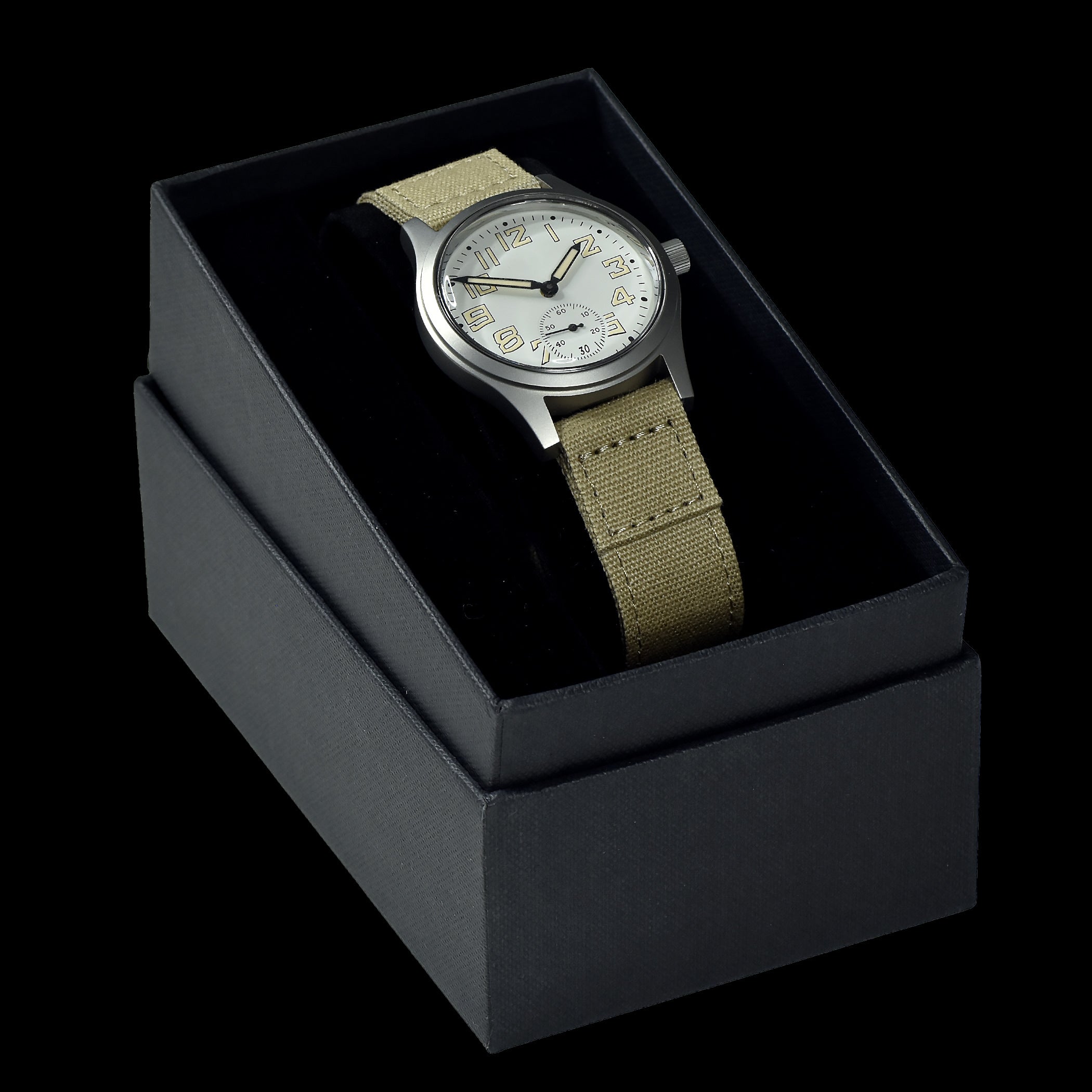
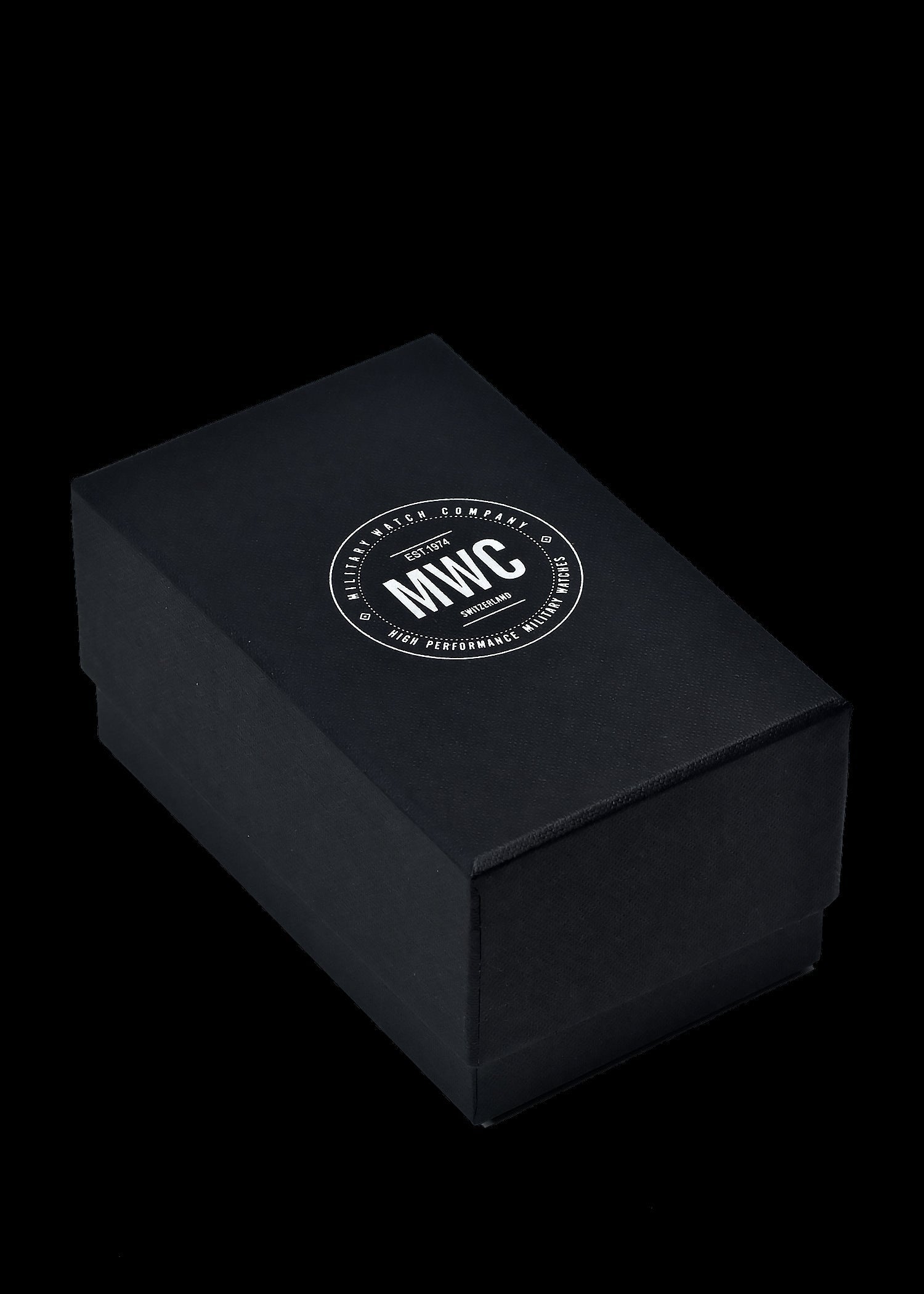
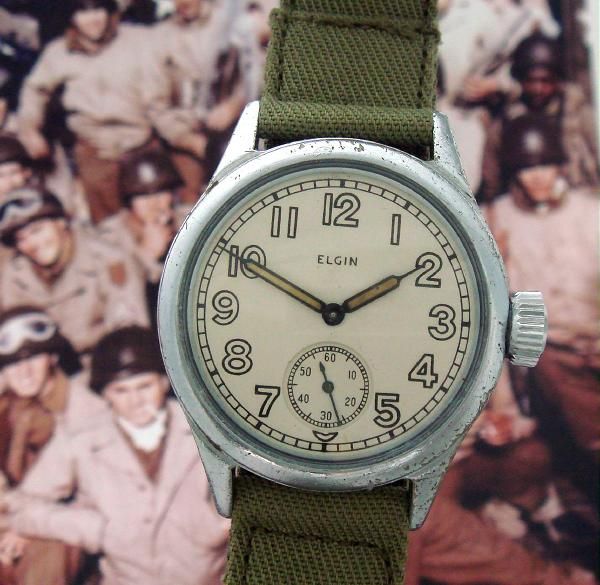
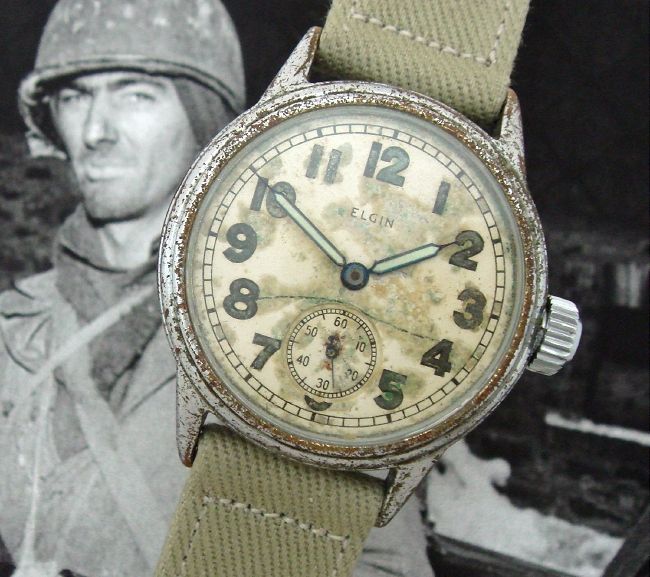
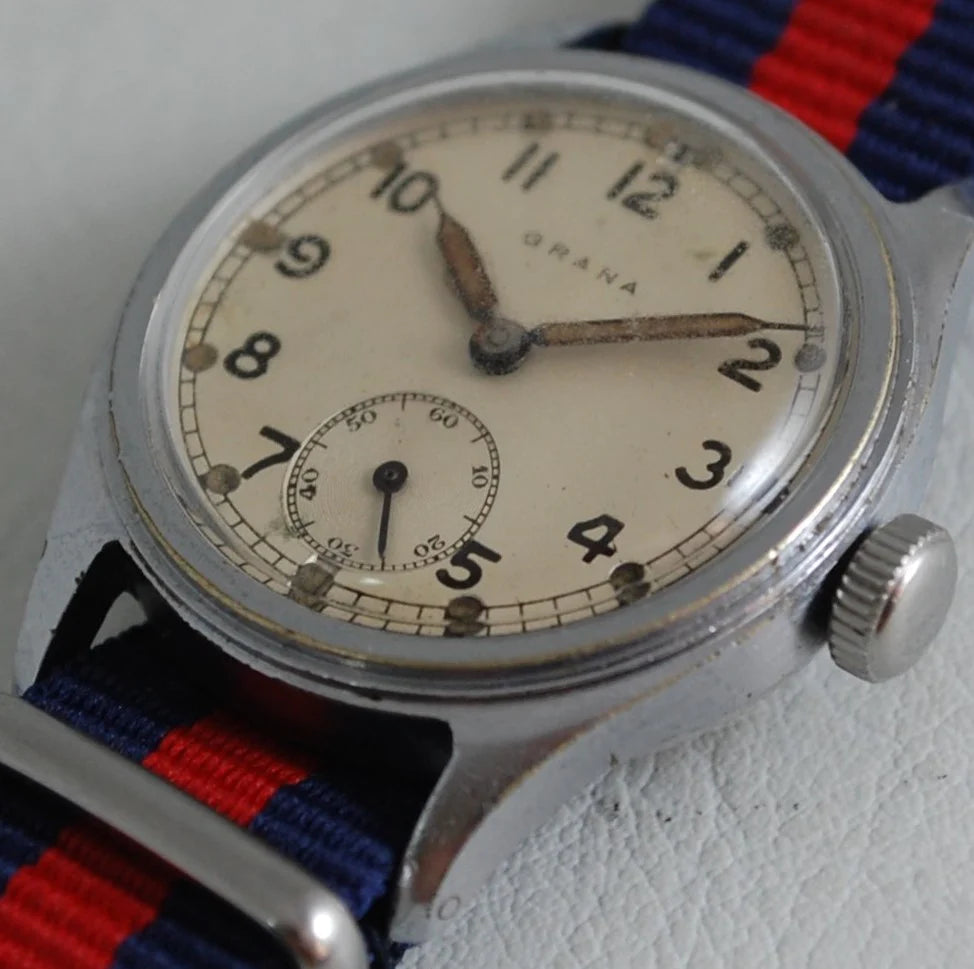
WWII 1940 Pattern American Army Ordnance / ORD Watch (Hand Wound Mechanical Version)
Description
SKU: ORD1/HW
In WWII, Ordnance watches were made for the US military by Waltham, Hamilton, Bulova, and Elgin. The original watches were made of nickel-plated brass because wartime conditions precluded the use of stainless steel. Consequently, the original watches were not very durable, making it challenging to find one in good condition today. The original watches were very small, measuring 33/34mm, but we have increased the size slightly to 36.5 mm (excluding the crown) and 39 mm (including the crown).
The US Army Ordnance Department watches were intended for use by non-aviation personnel. The A-11, which is similar but has a black dial, was the USAAF equivalent.
Interestingly, the British War Office procured a very similar timepiece in 1938, two years before the ORD watches, which explains why the designs look almost identical.
Before WWII, and particularly during WWI, soldiers adapted various civilian pocket watches and trench watches to their needs. This was also the case with American troops. It was only following World War I that the British War Office decided to procure watches designed specifically for military use, and the US Army Ordnance Department followed the same path.
During WWII, US Army personnel were issued watches by the "ORD DEPT." In 1940, the Ordnance Department published specific requirements and specifications for military watches. Consequently, ORD and ATP watches were very similar in basic specification and design, meeting the key objective of standardizing the timepieces in use.
The original watches were hand-wound, and this particular watch retains the hand-winding mechanical movement. There is also a self-winding automatic version for buyers who prefer not to wind the watch by hand each day.
For comparison, the last two images were sent to us by a watch enthusiast and show original WWII watches made by Elgin (ORD watches). The third image is a Grana, a British military ATP watch. As you can see, they followed a very similar design with minimal differences.
Specifications:
- Case Diameter: 36.5 mm (excluding crown), 39 mm (including crown)
- Lug to Lug: 43 mm
- Thickness: 13.5 mm
- Lug Type: Spring Bars
- Dial Color: Off White
- Case Material: 316L Stainless Steel
- Caseback: 316L Stainless Steel
- Crown: 316L Stainless Steel
- Water Resistance: 5 ATM (50 m)
- Movement: 21 Jewel Mechanical Hand-winding
- Subsidiary Second Hand
- Glass: Plexiglass / Perspex
- Luminous Material: Luminova
- Serial Number: Engraved on caseback
- Strap: 18 mm Canvas
- Guarantee: 24 Months
ESSENTIAL WINDING INSTRUCTIONS AND GUIDELINES
To wind the watch from an empty state to full, you'll need approximately 30 turns of the crown (most other hand-wound watches require 30 to 40 turns, so this movement needs significantly less). Once fully wound, the watch boasts an average power reserve of around 36 hours. It's crucial to exercise caution during the winding process, because when the locking crown is being secured, it adds an additional 3 or 4 winds while being screwed down. This must be factored in, especially since most hand-wound watches of this type lack a screw-down crown, which we added to increase water resistance.
For those who wear the watch daily and wind it consistently, such as every morning, a slight variation in the number of turns will not significantly impact the overall power reserve, as it will remain well below the maximum of around 36 hours.
Some users have reported that 25 turns are sufficient when winding every 24 hours. This is logical because the watch wouldn't need a full wind after 24 hours. Nevertheless, individual preferences may vary, and most owners tend to develop a sense of the optimal winding routine within the first few days of ownership.
Above all, it's crucial to emphasize the importance of not overwinding the watch, which could lead to locking up issues or, worse, damage or breakage of the mainspring. Adhering to the recommended winding procedures ensures the longevity and proper functioning of the timepiece.
Note: Overwinding occurs when a mechanism is wound beyond its designated stopping point, posing the risk of damage or destruction to the winding mechanism. Overwinding is a concern primarily for manually-wound watches, not for their automatic counterparts, which normally cannot be overwound.
Europe, UK, and Rest of World
Tracked Mail:
- Europe: €11.75 / £9.99 / US$12.95
- UK: £7.95 / €9.50 / US$10.50
- Rest of World: US$22.75 / €20.50 / £17.50
Express Courier (UPS or FedEx):
- Europe: €23.50 / £19.99 / US$25.95
- UK (UPS/DPD): £12.95 / €15.25 / US$16.95
- Rest of World: US$45.50 / €41.25 / £34.95
Note: The exact shipping cost may vary slightly depending on the weight and dimensions, but it will only differ by a small amount and will be shown at checkout. The above rates cover approximately 85% of parcels.
For more details click here
If you are not satisfied with your purchase or it does not meet your requirements, you can return it within 14 days of receipt. The item must be in its original condition and packaging. To return a watch, please notify us using the form at the link below.
Please note that the watch, strap, or other purchased item must be in new and resalable condition. The returns policy will not apply if the item has been worn, the plastic protectors on the dial and/or caseback have been removed, or if there are other signs of usage, such as a worn strap. Essentially, the goods should not have been used beyond what would be expected if you had handled or examined an item in a shop before purchase.
To request a return authorization number, please visit this link.
Read our full returns policy here











WWII 1940 Pattern American Army Ordnance / ORD Watch (Hand Wound Mechanical Version)
